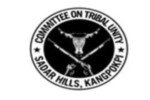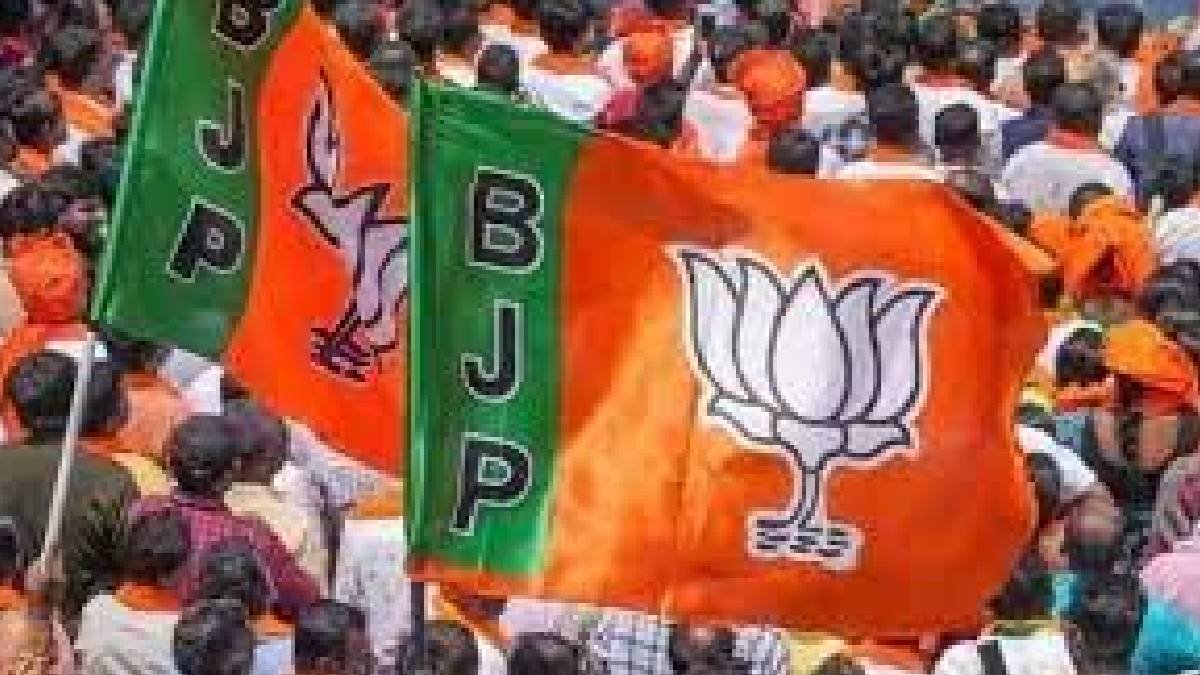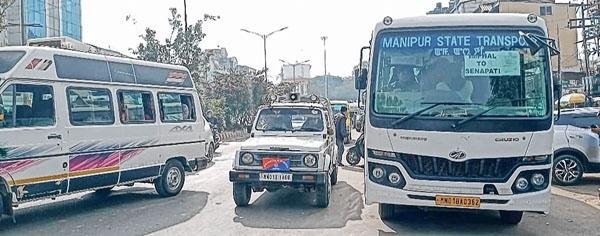IMPHAL, Oct 29: Manipur is a tiny state in Northeast India
with a population of 28.55 lakh that has diverse people of
various Naga and Kuki-Chin tribes who speak different
languages, besides the Meitei who inhabit the central
valley region of Manipur. The Indigenous Liangmai Tribe is
a recognised Scheduled tribe enlisted in ST list vide
constitution order (Amendment) Act, 2011 republished in
Manipur Gazette No. 838 dated March 27, 2012.
The Liangmai community lives in various districts of
Manipur, viz Tamenglong, Senapati, Kangpokpi, Noney,
Imphal West and Imphal East with a sizeable population of
about 70,000 approximate and nearly 100 villages with the
literacy rate of 73 per cent in Manipur. The Government of
Manipur as ordered by the governor dated December 2,
2021 had declared Chaga Ngee October 30 as a restricted
holiday in the state.
There is an enhanced awareness amongst the Liangmai of
the changes that have been taking place in the society
largely as a result of the spread of globalisation,
Christianity, westernization and the development of new
economic and political forces leading to giving up of
traditional cultural practices.
Change is a law of nature, and it is a natural phenomenon
that a stronger form of culture often imposes its influence
upon the other. The spread of Christianity within the
community has changed the religious beliefs, rituals and
practices, raising questions about how they can coexist
with their traditional ways.
Furthermore, the influence of westernisation and foreign
cultures has brought about many changes in the Liangmai
culture with the dangerous consequence as the modern
society has conformed so much to the new developments
that the traditional cultural practices are slowly losing their
relevance. In fact, as the saying goes, a stitch in time saves
nine, every possible measure should be invested to keep
alive our traditional culture at any cost.
Chaga Ngee as one of the most significant indigenous post-
harvest festivals is celebrated by the Liangmai in the
month of Chaga Hiu (Kabai Hiu) based on the lunar
calendar which is equated to the month of October
in present time. The Chaga Ngee is considered as a festival
of sanctification, purification of society especially the
warriors, blessing, thanksgiving and determination of
individual lucks through omens as indicated by Npeng
kepbo/Phenbou.
It is rather a festival of seeking blessing from Tingwang,
the supreme God by the tribe. Based on the lunar calendar
by observing the cycle of the moon, the Singkupiu (chief
priest) assisted by the Apaimai, the council of elders
decides when the Chaga Ngee will begi
The calendar is maintained by the method of ‘Singchet
Riobo’ (Singchet, means a thin stick and Riobo, means
partially breaking/making a mark by folding) where a
particular thin stick chosen for that month is partially
broken every new day to calculate the days and month of
the year. Once the new moon is sighted and the priest
declares the date, every necessary preparation for the
festival will begin and every villager takes utmost
measures to keep themselves safe from getting injured or
falling sick.
It is considered a bad omen to be injured or get sick and be
bedridden during the festival. Certain things considered as
taboos or sins are strictly prohibited and the people
refrained themselves not to indulge in all those actions;
refraining from eating certain foods like vegetables
obtained from creepers and from going to pregnant
women or menstruating women’s house, or family
performing ‘Tadiak rituals’ (family whose member died
that year and are considered to be still living together with
the death soul).
The preparation for the Chaga Ngee begins with a day
called the ‘Zao Ra Thaobo nai’. On this day all necessary
arrangements for ‘Zao Madungbo’, fermenting of
powdered rice for preparation of indigenously brewed
wines for consumption during the festival is made. Two
days after the preparation of wine was initiated, that is on
the third day, the festival begins with the day named as
‘Kabak Minwangbou nai’ also popularly called as ‘Chami
Malapwangbo nai’, wherein a new fire is kindled for the
festival forsaking the old one.
The new fire symbolizes a thoroughly cleansed new phase
of life. The second day of the festival is called the ‘Npeng
Kepbo nai’. This day is also called as ‘Chareng Kepbo nai’
because a symbolic effigy/figurine of a bird called
‘Chareng’, a hornbill is painted with ‘Kiangui’ (a dye made
out of black soot/ash collected from Mengkang, a platform
above the hearth to dry or hang things) on a flat wooden
plank hewed out of Nbahsing (a kind of tree with broad
leaves soft/spongy trunk) and a specific kind of reed from a
shrub called ‘Ading’ will be thrown by the individual in the
form of darts targeting the specific parts of the effigy on
that day.
The third day of the festival is named as ‘Malong Ponbo
nai’, a day on which the menfolk would give what is known
as ‘patan paliu kong khaibo’, the giving of cooked rice,
meat curry/meat and eatables to the sisters and
daughters/womenfolk of one’s clan and lineage. On this
day, it is no more a taboo to mix with the women and girls
unlike the first two days where it is a taboo to eat food
prepared by the womenfolk or drink the water fetched by
women. Boys and girls would go to collect firewood on this
day. This day is also called ‘Gadi’, meaning the big chaga
feasting day as both men and women would join the
festival. The fourth day of the festival is called ‘Chaga
Pahbo nai’.
It should fall on the day of the full moon night. On this day,
before the evening sets in, the feasting and drinking of
wine must stop because it is considered a taboo to
consume Chaga food and wine after Chaga Pahbo and it
was believed that the consumers will be vulnerable to
injuries or accidents. So the excess/leftover food and wine
will be collected for the old menfolk to feast on it as
‘Chaga Laibo’. This part of the festival which would
continue into the fifth day is known as ‘Chaga Laibo’, the
eating and feasting of old folks in a separate enclosure
made out of ‘Tadong’ (bamboo mat) outside the house as
it is a taboo to bring Chaga food and wine inside the house
after Chaga Pahbo.
One of the most important activities of the Chaga festival
is the Npeng Phenbo/Charengkepbo. It has both religious
and secular connotations. For this, the picture of the
Chareng (hornbill) is painted on wooden plank hewed out
from trees such as Nbahsing or Ntabang (Indian Coral
tree/Erythrina) and is tied on a tall, straight and slender
tree cut from the forest which in turn is tied to a living tree
on a sacred spot earmarked to carry out the activity.
The Npeng with the effigy/picture of the hornbill is divided
into five parts with symbolic nuances such as the head,
neck, chest, stomach, and below the pelvic region.
The head is called Charibai which symbolises victory in
warfare. The neck symbolises the great hunter and is also
called the Tathiubai. The chest is called the Aliubai,
representing good luck for finding a partner and is
considered the favourite target for the unmarried. The
stomach epitomizes wealth and bountiful harvest and it is
called Chamiubai.
The pelvic region is called the Majiubai, and it signifies bad
omen of getting dysentery or diarrhea and is not liked by
anyone. As all the male members of the Khangchiuky (A
dormitory of the folk school for life popularly known as
Morung) gathered to perform the symbolic Npeng Phenbo,
the priest will perform a ceremonial opening.
Once the ritual is conducted, all the members of the
Khangchiuky take turns to throw their darts of Ading at the
effigy with prayers to hit the specific target they want. It is
believed that where they hit determines the fate of that
year. Meanwhile other related rituals were also
performed. The activity of Npeng Phenbo is concluded by
a prayer of blessing from the priest.
As soon as the moon is sighted to signal the beginning of
the month of Chaga Ngee, the priest would make a cry of
public declaration that nobody should be sick, no debts
should be asked for and there should be no conflicts and
violence of any kind in the society. The Liangmai will be
celebrating Chaga Ngee in Manipur, Nagaland, Meghalaya,
Maharashtra, Delhi NCR etc. Chaga is a celebration of a
beautiful and culturally rich festival with true intent and
spirit of beautiful traditional attire and melodious folk
songs and dances showcasing and promoting the best
talents.
The festival affirms this spirit and philosophy to promote
understanding and appreciation of a rich cultural heritage,
tolerance, and social cohesion, all of which are crucial for
building peace and harmony in society. A festival like
Chaga can indeed play a significant role in building peace
and harmony, understanding and appreciation of diverse
cultures, reducing prejudice and promoting harmony
among different communities, tolerance and acceptance of
different religious cultural practices.
Chaga Ngee can be and should be given the status of state
festival and be declared as a general holiday and it can
have a huge impact for Manipur and entire Northeast
India. After all, experiencing festivals linked to cultures and
traditions is the ultimate way to immerse oneself into
other’s communities. Chaga Ngee has the potential to be
one of the best indigenous festivals that connects people
and communities not only at the local level but even at the
regional, national and global level by attracting tourists as
a state event. (NNN)







